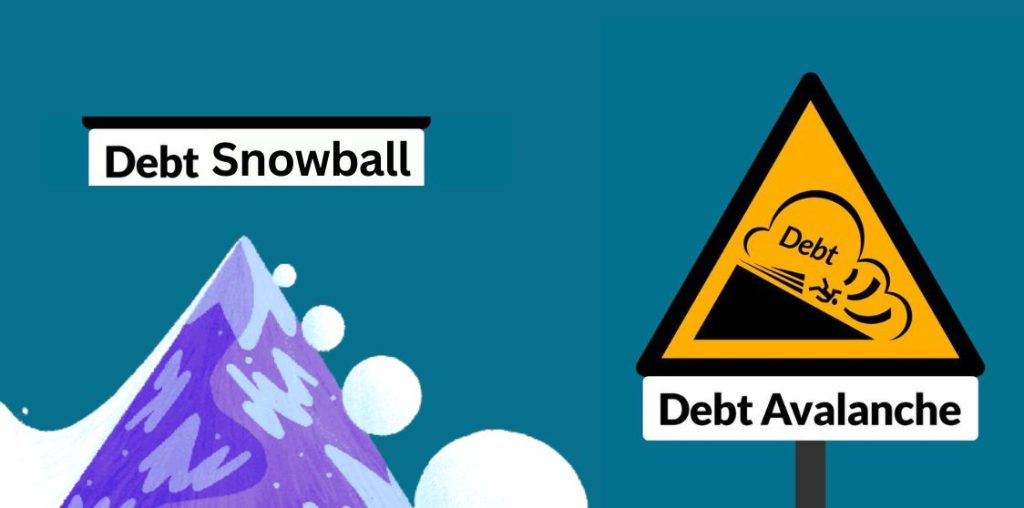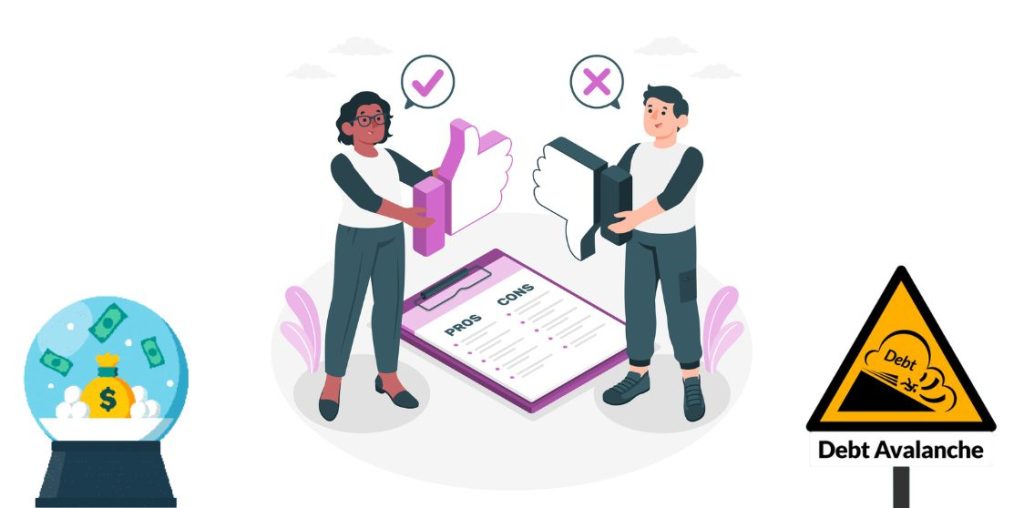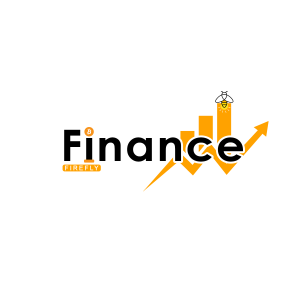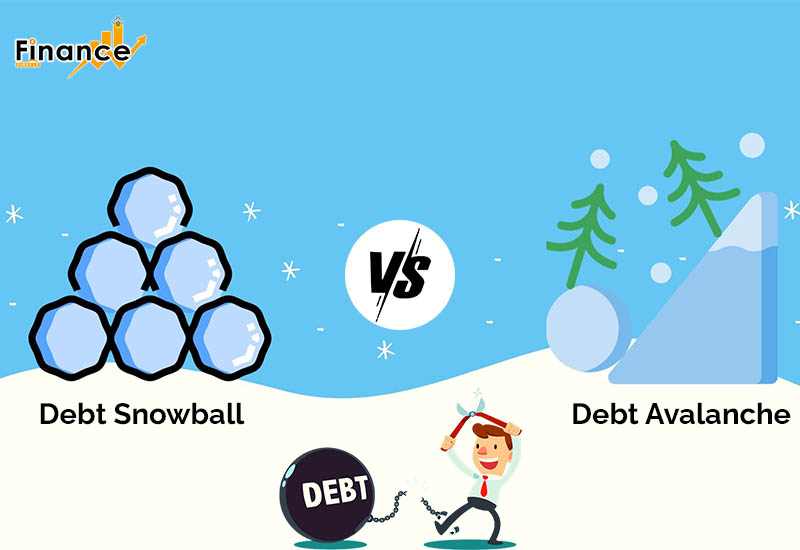Paying off the debt can be a tiresome task for you, but it does not have to be . Understanding the two debt repayment approaches debt snowball vs debt avalanche will give you the confidence to become debt-free in a short span of time.
When making a comparison between the debt snowball vs debt avalanche technique, it is important to consider which one will motivate you more to stay on track. The debt snowball technique is a psychological boost to pay off smaller debt first while debt avalanche is all about numbers.
Here’s a snapshot of the two approaches debt snowball vs debt avalanche and how one works better than the other.
Table of Contents
Best Ways to Pay off Credit Card Debt
As paying off the debt is not an easy feat for many individuals. Other than buying your debt as a lump sum payment there are three other ways to get debt free.
Debt Consolidation
Through this approach, you take a new loan from a new credit card which is of lower interest rate than what you are currently paying. You pay one monthly payment that’s much more easier track then multiple bills at different time slots.
Best ways to consolidate credit card debt
If you are in search of the best ways to consolidate debt , you can have a look at the details of each method in method. The most common ways to do is through balance transfer credit cards and personal loans.
Debt Snowball
Through this debt repayment approach, you pay off the smallest debt first and then move on to the next card with the smallest amount, and so on. This a psychological way to get motivation to pay off the debt in an effective manner.
Debt Avalanche
With this viable approach, you make the biggest payment of the credit card that charges high interest . Although this method can take you a little longer you will get out of the debt while paying less interest charges.
Key Takeaways – Debt Snowball vs Debt Avalanche

- The debt snowball and debt avalanche both are good and viable debt repayment plans
- When making a comparison between debt snowball vs debt avalanche, the debt avalanche will cost you less interest rates as you pay the debt with a high-interest rate prior to the smaller ones
- The debt avalanche method involves making minimum payments on all sorts of debt while using the additional funds to repay debt that has the highest interest charges
- The debt snowball method involves making monthly payments all sorts of debt , then paying off the smaller one first before moving to the big ones
Debt Snowball vs Debt Avalanche – Detailed Overview

There is not a single debt payment method that is fit for everyone , so let’s dig deeper into the details .
Debt Snowball
The debt snowball approach involves paying off the smallest debt first and then moving on to bigger ones. It is a strategy that tackles the easiest task first and the moves to the hardest one. First of all list the amount you owe in an order ranging from low to high. The primary target should be the smallest amount and then put on extra money to make payments for the large ones.
Debt Snowball Example
So for instance you have $3000 extra to repay debt each month , how you will go about the debt snowball technique is as follows :
- $10,000 credit card debt with regular APR of 18.99 %
- $9,000 car loan with a regular APR of 4%
- $15,000 student loan with regular APR of 4.5%
Through the snowball approach, you will lay your focus on the car loan because you owe the smallest money on it . This way you will be able to settle this amount in a duration of 2-3 months and then move to the next small one and the cycle continues until you pay all of them.
Debt Avalanche
The debt avalanche is also regarded as debt stacking in which you pay off the debt in order from high-interest charges to the lowest one regardless of the balance you owe. This technique is the right fit for you if you make timely payments in a more disciplined way. Also, this one is the least expensive and fastest route to pay off debt.
Debt Avalanche Example
Let’s just imagine a case where you have $3,000 extra each month to pay off the debt and have the following debts to repay :
- $10,000 credit card debt with regular APR of 18.99 %
- $9,000 car loan with a regular APR of 4%
- $15,000 student loan with regular APR of 4.5%
In this scenario using the debt avalanche approach, firstly you will pay off the credit card debt with the highest interest charges. If you pay $10,000 credit card debt with a regular APR of 18.99 % in the duration of 11 months you have to pay interest charges of $1,011.60 as interest.
While making the comparison between the debt snowball vs debt avalanche, the snowball method would have you tackle the lowest loan $9,000 first. If you become debt-free in 11 months you have to pay interest charges $1514.97, $500 extra in comparison with debt avalanche.
Debt Snowball vs Debt Avalanche – Pros and Cons

Pros and Cons of Debt Avalanche
The debt avalanche method can save additional money and time, but it has its own set of disadvantages. The debt avalanche strategy will not work if you lose the motivation in the middle and eventually plan to drop this repayment method
In cases where you have greater daily expenses and even emergency expenses arise , you eventually have to stop using the debt avalanche approach.
Pros
- Reduces the amount of total interest you pay over time
- Significantly reduces the amount of time you take to repay your debt
- Great choice for budget-oriented people
Cons
- Requires extreme determination and commitment
- Needs discretionary income to opt this approach
Pros and Cons Debt Snowball
The key advantage of the debt snowball method is that it helps you effectively gain motivation to repay your debts. As you pay the smallest debt first, you see the results faster which is a great motivation to keep going. With this technique, you only have to compare the amount you owe interest rate, and APR applicable.
But the largest drawback of this technique is that it does not reduce the amount of money as you have to pay additional interest charges.
Pros
- Effectively gain motivation by paying the smallest amounts first
- Provides psychological satisfaction as the debts are eliminated card by card
Cons
- This method will take you a longer time to pay the debt in comparison with the debt avalanche approach
- Does not reduce the interest charges as the debt avalanche method does
Debt Snowball vs Debt Avalanche – Which one is right for you?
When making a comparison with the repayment of debt, it is preferable to choose the one that is right for you. Either approach can help you pay off five-digit or six-digit debt in few years depending upon your financial situation. Instead of wasting time in deciding between debt snowball vs debt avalanche, start off with a single technique and see if it works for you.
The end goal is to pay off debt but debt snowball gives you the motivation, which is the secret sauce to get out of debt. As you pay off smaller debts , you get the taste of the victory and eventually have the courage to carry forward with the remaining process. While debt avalanche will give you the feeling of accomplishment after a long span of time.
Fret not and stop researching or crunching all the numbers, instead just focus on a single strategy to pay off debt.
Frequently Asked Questions
Is it preferable to pay off big debt first?
Ideally , it is preferred to pay off debt with high interest rate first. As for the future you will save substantial amount of money by saving interest charges. But in case you don’t have enough money to repay the debt with high APR, go first with smaller debts.
What are the three big strategies to pay off debt ?
The main strategies to pay off the debt are:
1. Debt Snowball plan
2. Debt Consolidation
3. Debt management









